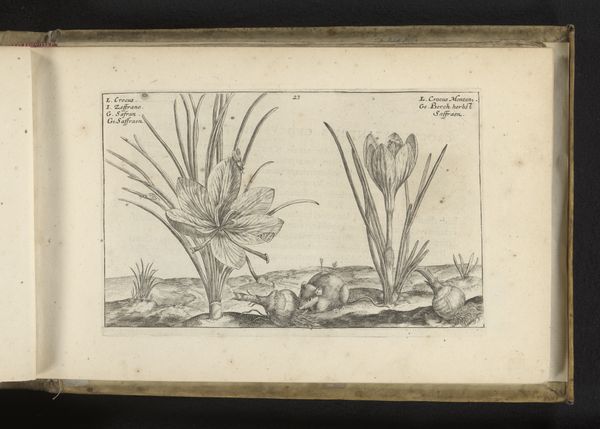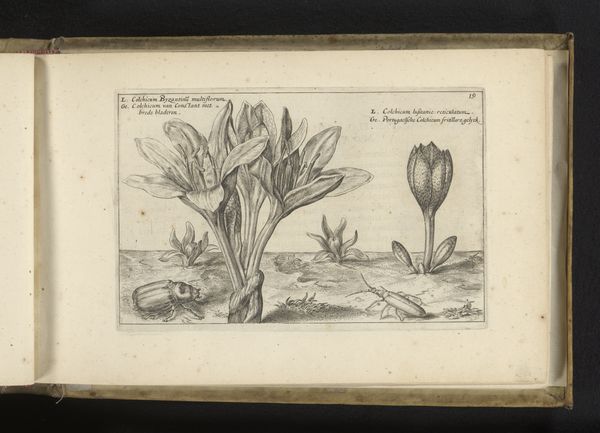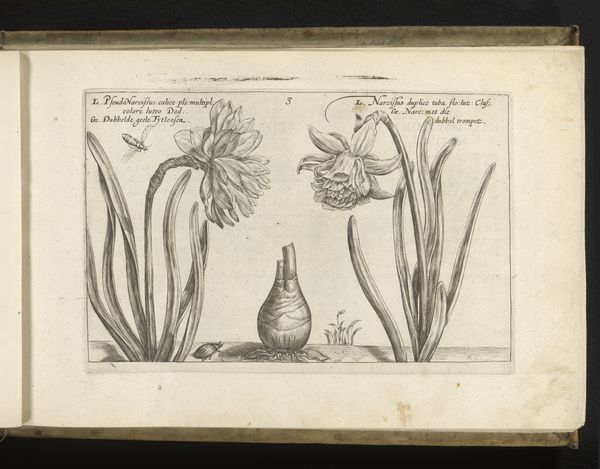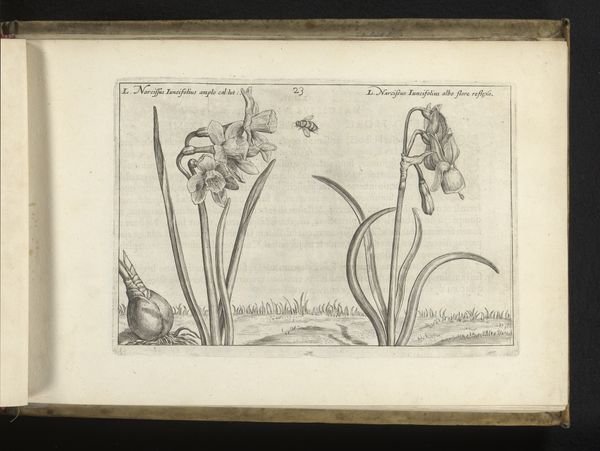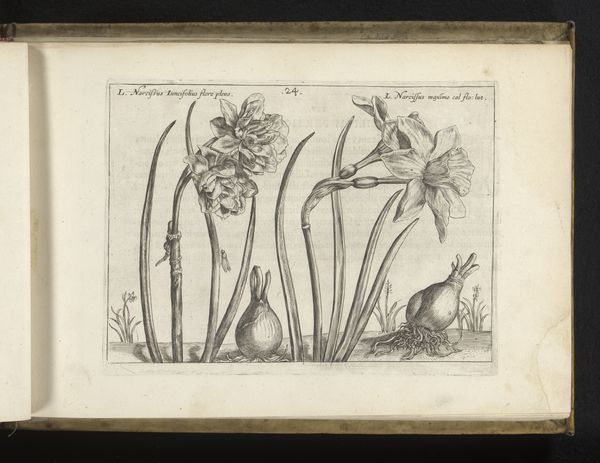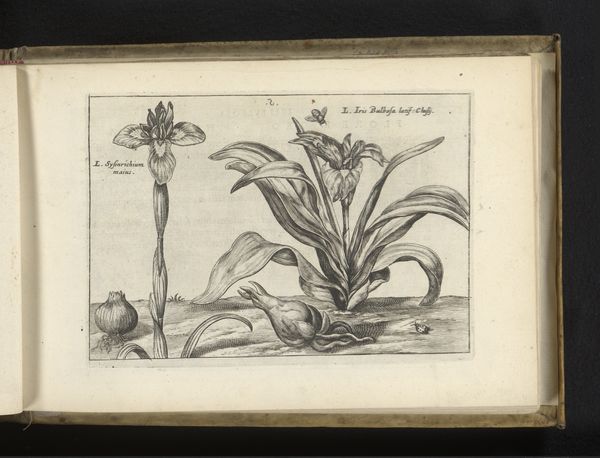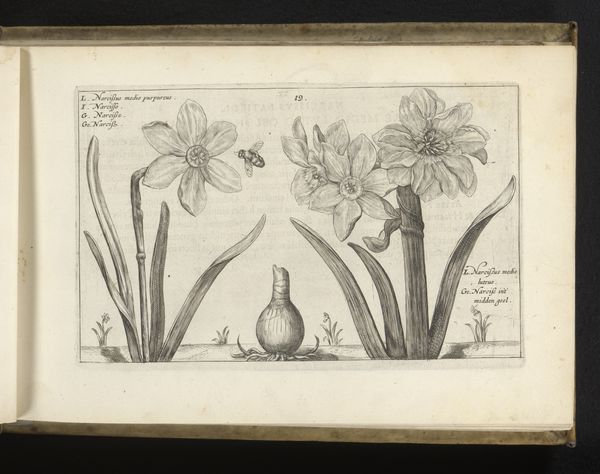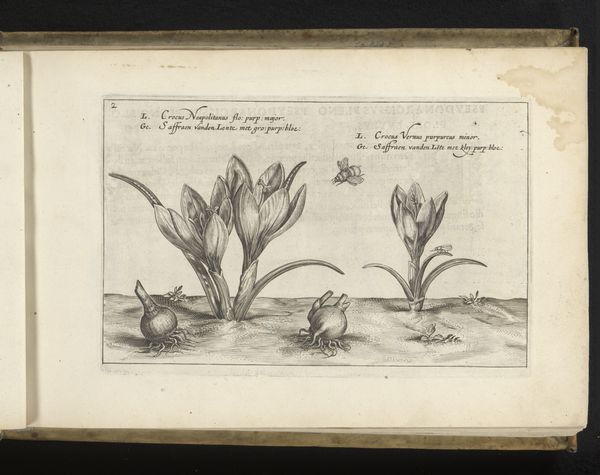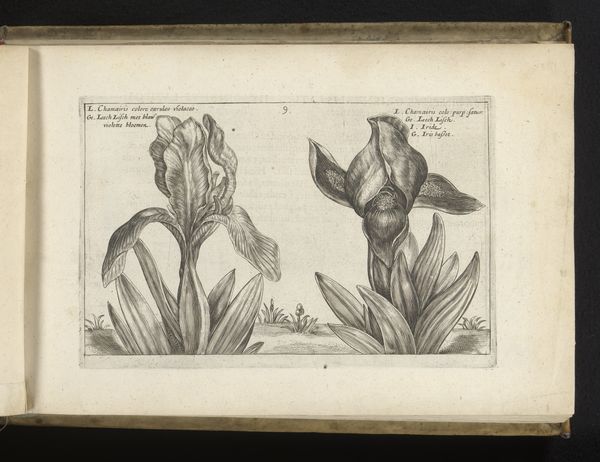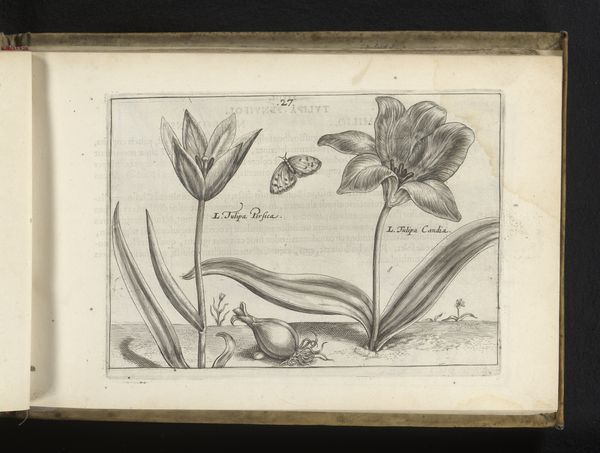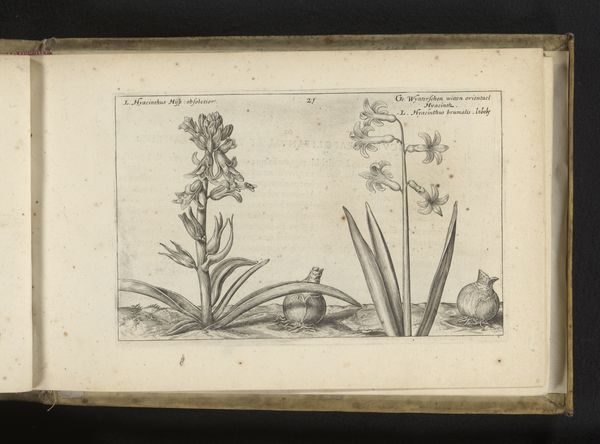
drawing, print, paper, ink
#
drawing
#
baroque
# print
#
paper
#
ink
Dimensions: height 147 mm, width 210 mm
Copyright: Rijks Museum: Open Domain
Curator: This artwork is titled "Twee hyacinten," or "Two Hyacinths," created in 1617 by Crispijn van de Passe the Younger. It’s a print made with ink on paper. Editor: It’s lovely. The botanical illustration feels meticulously observed. The delicate lines create a subtle interplay of light and shadow that, even without color, feels alive. Curator: Van de Passe was a prolific printmaker, part of a family of artists and publishers, producing numerous botanical illustrations like this one. What interests me is considering this work within the larger context of printmaking as a developing industry. Consider the networks of distribution and the commodification of knowledge inherent in the creation and consumption of these images. Editor: Absolutely. And it's interesting to think about how these images circulated—the context of gardens, the developing Dutch economy rooted in trade with often devastating repercussions on indigenous populations, even colonial extraction. Representations like these helped to classify and control the natural world. Curator: Right. Looking closely, you can see the way the artist uses line and shading to suggest form. Notice, too, the inscriptions at the top, labeling different parts of the plants. It shows an interest in conveying not just the aesthetic beauty, but a detailed rendering for botanical study, almost like a diagram. Editor: The very act of classifying and labeling becomes an act of power. The illustration isn't a neutral depiction; it reflects specific societal values and ways of seeing the natural world, impacting how nature is understood and treated, of course. Curator: Definitely. Also, remember the cost of inks, paper, and the labor required to produce each print in the 17th century. Today, these can be infinitely reproduced with minimal cost, influencing perceptions about artistic processes. Editor: Seeing them presented together encourages us to think about not only aesthetics, but production, power, and perspective in botanical depictions. Thank you for that lens. Curator: It’s important to keep in mind, especially with these historical images, that their apparent simplicity hides the social, economic, and material layers involved in their creation. Hopefully this was illuminating for everyone.
Comments
No comments
Be the first to comment and join the conversation on the ultimate creative platform.

